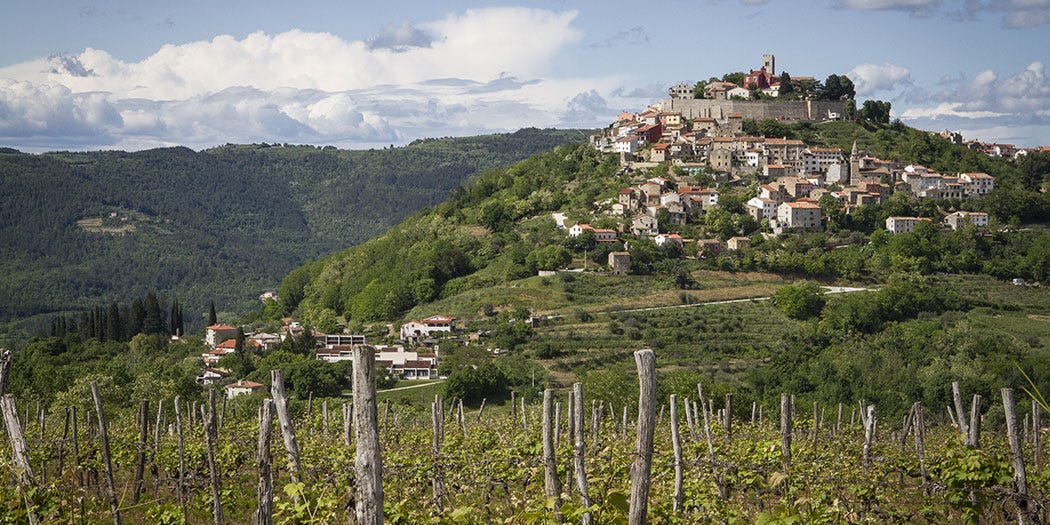Croatian wines in the Café Europa
Year 15, No. 07
Highlights: Croatia 2025 | Bizkaiko Txakolina 2025
Recently, I’ve been re-reading Slavenka Drakulić’s excellent non-fiction book, “Café Europa”.
Drakulić, a Croatian who grew up within the confines of Communist Yugoslavia, wrote this book in 1995 and offered up an exceptionally deep and insightful look at not just former Yugoslavia, but all of the former Communist countries in Europe. Her text hones in on this post-Communist period when these countries dismantled the political and economic systems which had been in place for most of the 20th century. While it may seem dated 30 years after publication, so much of what happened still has a tremendous effect on the modern day.
The transition was, to use the technically term, “wobbly”. Some countries such as Slovenia have a GDP per capita now nearly on par with Italy. Others, such as Romania or Georgia are constantly on the brink of sliding into a very deep, undemocratic hole with a not insignificant percentage of the population living in poverty.
But when it comes to Croatia, the stumbling from command economy to that of free market was seen exceedingly clearly via their wines. Various Communist Era cooperatives initially boomed post-Yugoslavia to only then collapse as various private operators rose to produce considerably better wines, despite being at higher prices.
I first read Café Europa 20 years ago which also happened to be the same time I took an interest in Croatian wines and I’ve watched them evolve tremendously over the last two decades. That’s why it’s been very interesting to compile this, the Croatia 2025 Report as it shows what seems to be a country that has finally reached a level of stability.
A great many of the current winemakers have come of age not at the end of Yugoslavia nor the beginning of an independent Croatia, but seeing most of their lives connected to, or fully within the European Union. There are always detractors who build up their straw house podcasts via bad mouthing the bureaucracy of Brussels, but the difference between pre and post-joining the EU wines in Croatia is like night and day, and we’re most definitely seeing the fruits of this effort now in 2025.
As always, this report (as well as that of Bizkaiko Txakolina and the other 160+) is available for subscribers. Those at the Casual level have access to the main report, while Classic and Pro levels have access to the scores and tasting notes as well.
Drink well, be well.
-Miquel
(*) Free to read
The Featured Reports
Croatia 2025
A country with very distinct regions within it and always, constantly evolving. So much so that this report shows some of the biggest changes to date.
Bizkaiko Txakolina 2025
If you think txakolina is just a fun, zesty, low-alcohol, often-fizzy wine, think again. These are some serious wines from Spain’s Atlantic Coast.
And now this
We all know that Twitter/X sucks, but it’s finally officially that when it comes for wine, it’s the suckiest! (*)
Unfortunately, there seems to be at least one region in Spain hit hard by hail each year. So far, that’s been Jumilla (*) who saw massive losses from a storm that blew through recently.
And as a manner to understand the wines of the Mediterranean, Perelada presented a selection of ‘five levels’ to deepen the understanding of those who attended the first Mediterranean Wine Symposium.



